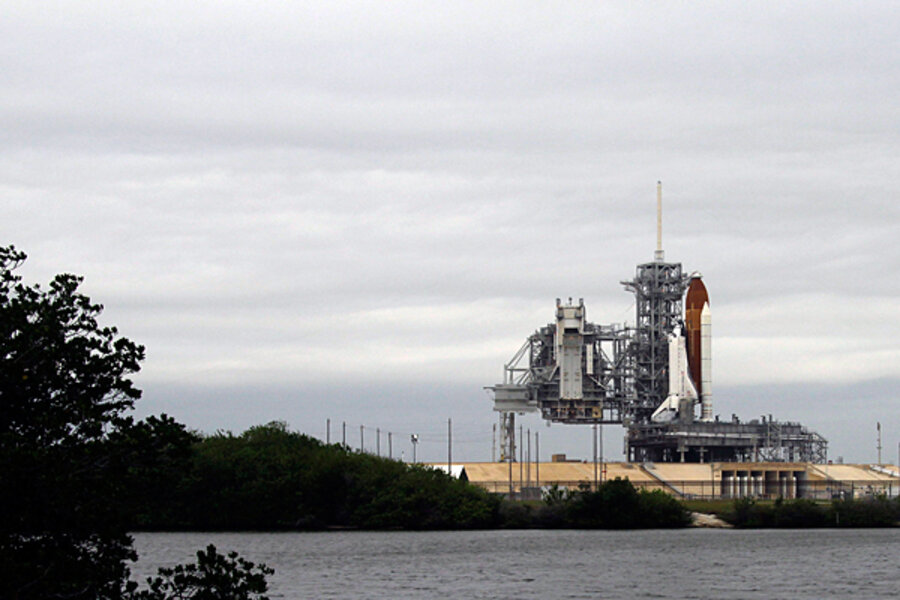Biggest crowds since Apollo days await Endeavour shuttle launch
The space shuttle Endeavour and its six-member crew are poised for launch Friday afternoon on the final mission for the orbiter, and the next-to-last liftoff in a program that has been the centerpiece of NASA's human spaceflight program for nearly 40 years
The mission represents a bookend of sorts for Endeavour, a craft that mission commander Mark Kelly calls "the baby of the fleet."
Built to replace the shuttle Challenger, which broke up shortly after launch in January 1986 and cost the lives of its seven crew members, Endeavour lofted the first US segment of the International Space Station in 1998.
During this flight, it will deliver the last major US-led piece of hardware – a nearly 7.5-ton particle detector that aims to help scientists answer fundamental questions about the history and evolution of the universe.
The mission also is surrounded by an emotional component rarely seen during shuttle launches.
Officials were expecting crowds of between 500,000 and 750,000 to watch the launch – numbers not seen since the days of Mercury and Apollo liftoffs.
US Rep. Gabrielle Giffords (D) of Arizona, who was shot and seriously injured by an assailant in Tucson, Ariz., in February, is attending the launch to support Captain Kelly, her husband. Her remarkable recovery, and the support she and the couple's families have given Kelly in his decision to remain in command of the mission, had been a consistent theme as launch-day approached.
As with Discovery's curtain call in late February and early March, Endeavour's final trip also is prompting reflection – if brief until after Endeavour lands – about the end of a era in human spaceflight.
"The last flight of each of these vehicles is very bittersweet for all of us that have invested so much of our time and careers into these flights," says shuttle lead flight controller Gary Horlacher.
The 14-day mission includes four spacewalks, during which shuttle astronauts will fine-tune some of the space station's hardware. In addition to the particle detector, dubbed the Alpha Magnetic Spectrometer 2, Endeavour is carrying a platform full of spare parts that will sit on the outside of the station.
But the to-do list also carried signs of space-exploration efforts to come. For instance, after Endeavour undocks from the space station, it will test a new laser-based docking system engineers are designing for NASA's Orion crew capsule, which would perch atop a new, more-powerful rocket that NASA is designing for human spaceflight. The mechanism represents an automated approach to docking spacecraft, rather than the piloted technique astronauts use with the shuttle.
When the shuttle leaves the space station, it will leave a piece of itself behind. The orbiter's robotic arm will become part of the station's robotic-arm system, allowing astronauts perched on the end to reach and repair the most distant points on the station's solar arrays.
Astronauts dramatically demonstrated the need for an extra extension during a mission in 2007, when mission specialist Scott Parazynski repaired a rip in a solar array that was barely in reach of the arm and extension the station had on hand at the time.
As for crew members themselves, mission specialist Michael Fincke is on track to set a record for the time a US astronaut has spent in space. By flight-day 12, he will have logged 380 days in space.
For his part, Fincke, a colonel in the US Air Force, is modest about the milestone, noting that 380 days hardly stacks up against Russian cosmonaut Sergei Krikalev's 803 days in space.
Still, it isn't going completely unnoticed. During a prelaunch briefing, crewmate Andrew Feustel added, "I'm glad people brought this up, 'cause now we can think of some way to commemorate it."
Something other than a crossing-the-equator-like dunking, one presumes.





